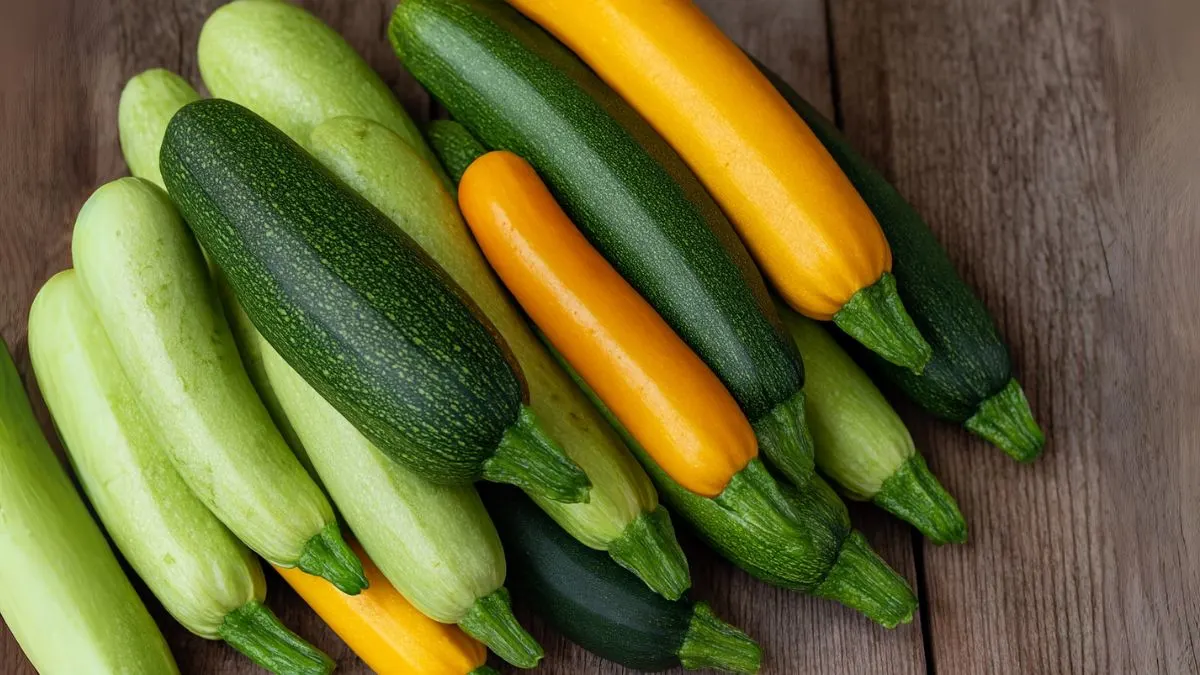If you’re new to gardening or simply want a reliable crop that rewards you with an abundance of fresh vegetables, zucchini is a fantastic choice. Known for its fast growth and high yield, zucchini can be a star performer in your backyard garden.
Whether you’re in Canada, the USA, or anywhere with a moderate climate, zucchini thrives with the right care. And here’s the good news—it’s easier to grow than you think.
1. Choosing the Right Location

The first step in growing zucchini is selecting the right spot in your garden.
- Always plant seeds outdoors after the last frost in a spot with full sun and well-drained, fertile soil.
- Avoid areas with poor drainage, as soggy soil can lead to root rot.
- A raised bed or mounded soil works wonderfully to improve aeration.
Personally, I’ve noticed that when my zucchini was planted in a sunny corner with compost-rich soil, it outperformed every other vegetable in my garden.
2. Understanding Zucchini Plant Needs
Healthy growth depends on giving your plants what they love most.
- Zucchini plants require full sunlight for at least 4–6 hours of the day. The more light, the better.
- Zucchini, like most vegetable plants, also requires good drainage, so avoid compacted clay soil.
- Adding organic compost improves both fertility and drainage.
Think of it as a “sun-hungry” plant—it thrives when it can soak up light without competing with taller crops.
Also Read: Redbud Trees Are Nature’s Pink Fireworks—Here’s How to Grow Them
3. When and How to Plant Seeds
Timing makes all the difference.
- Direct sowing is the easiest option. Plant seeds outdoors after the last frost when soil temperatures are at least 18–20°C (65–70°F).
- Sow seeds 1 inch deep and about 2–3 feet apart. This spacing ensures enough room for vines to spread.
- For earlier harvests, you can start seeds indoors in biodegradable pots two weeks before the last frost and transplant them carefully.
4. Soil Preparation and Fertilization
Soil is the foundation of your zucchini success.
- Loosen the soil 12–15 inches deep to allow strong root development.
- Enrich it with aged compost or well-rotted manure.
- Maintain a soil pH of 6.0–7.5, which zucchini loves.
- Fertilizer Tip: Use a balanced 10-10-10 fertilizer before planting and side-dress with compost every 3–4 weeks during the growing season.
5. Watering Needs
Zucchini grows fast, and that means it needs plenty of water.
- Provide at least 1–2 inches of water per week.
- Water at the base of the plant, avoiding wetting the leaves to prevent powdery mildew.
- Mulching with straw or shredded leaves helps retain moisture.
In my experience, consistent watering made a huge difference. When I skipped even a few days, the fruit turned bitter and growth slowed down.
6. Pollination and Flowering
Zucchini plants produce both male and female flowers.
- Male flowers appear first, followed by female flowers (you can spot them by the tiny fruit behind the blossom).
- Bees and other pollinators usually do the job, but if needed, you can hand-pollinate by transferring pollen from a male flower to a female one using a small brush.
Also Read: Grow These 7 Edible Plants in Just Water—No Soil, No Mess!
7. Common Varieties of Zucchini
There are many types of zucchini, each with its own charm:
- Black Beauty – Classic dark green, high-yielding variety.
- Golden Zucchini – Bright yellow fruits that add color to your garden and plate.
- Cocozelle – Striped, Italian heirloom variety.
- Round Zucchini – Perfect for stuffing and roasting.
Experimenting with varieties makes gardening more fun and rewarding.
8. Pest and Disease Management
Even the healthiest zucchini plant can run into trouble.
- Watch for squash bugs, cucumber beetles, and aphids.
- Use neem oil or insecticidal soap as organic control methods.
- To prevent powdery mildew, water early in the morning and ensure good airflow between plants.
A simple tip: rotate crops each year to reduce pest buildup in the soil.
9. Harvesting Zucchini
The joy of zucchini gardening is that it rewards you quickly.
- Harvest zucchini when they are 6–8 inches long for the best flavor.
- Use a sharp knife or scissors to cut the fruit, leaving a short stem attached.
- Regular harvesting encourages the plant to produce more fruit.
One summer, I made the mistake of ignoring a zucchini plant for a week—only to find a massive 3-foot-long zucchini! While it was still edible, the flavor was nowhere near as good as the smaller ones.
Also Read: How to Grow Loquats Fruits at Home
10. Quick Care Table for Zucchini
Factor |
Requirement |
Sunlight |
Full sun – at least 4–6 hours of the day |
Soil |
Well-drained, fertile soil with compost |
Planting Time |
After the last frost in spring |
Watering |
1–2 inches per week, water at the base |
Spacing |
2–3 feet apart |
Harvest Size |
6–8 inches long (smaller fruits are more tender) |
Zucchini is one of the most beginner-friendly vegetables you can grow. All it really needs is sunshine, rich soil, and consistent care. So, if you’re looking for a vegetable that will reward you with endless harvests, zucchini deserves a prime spot in your garden this season.






